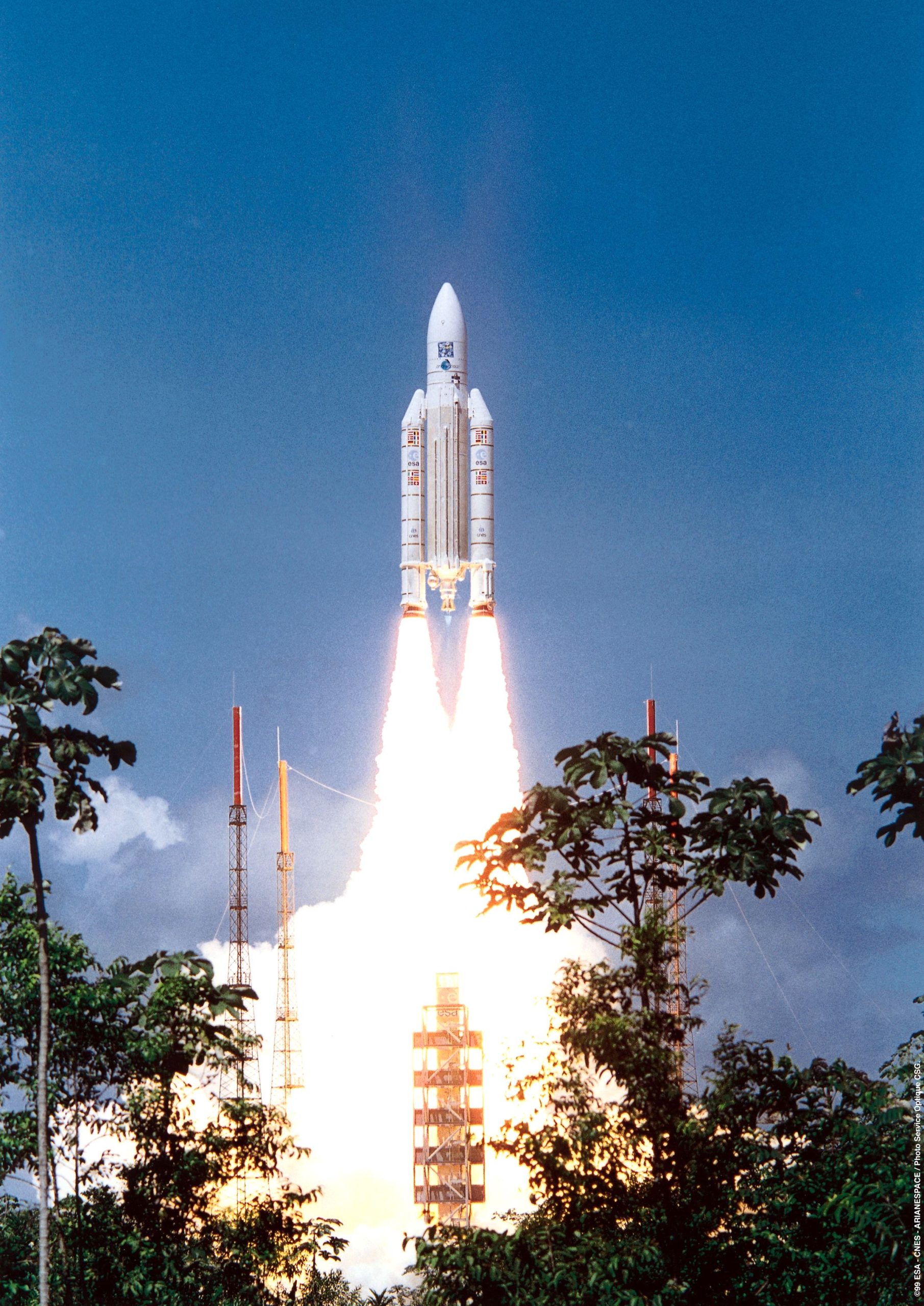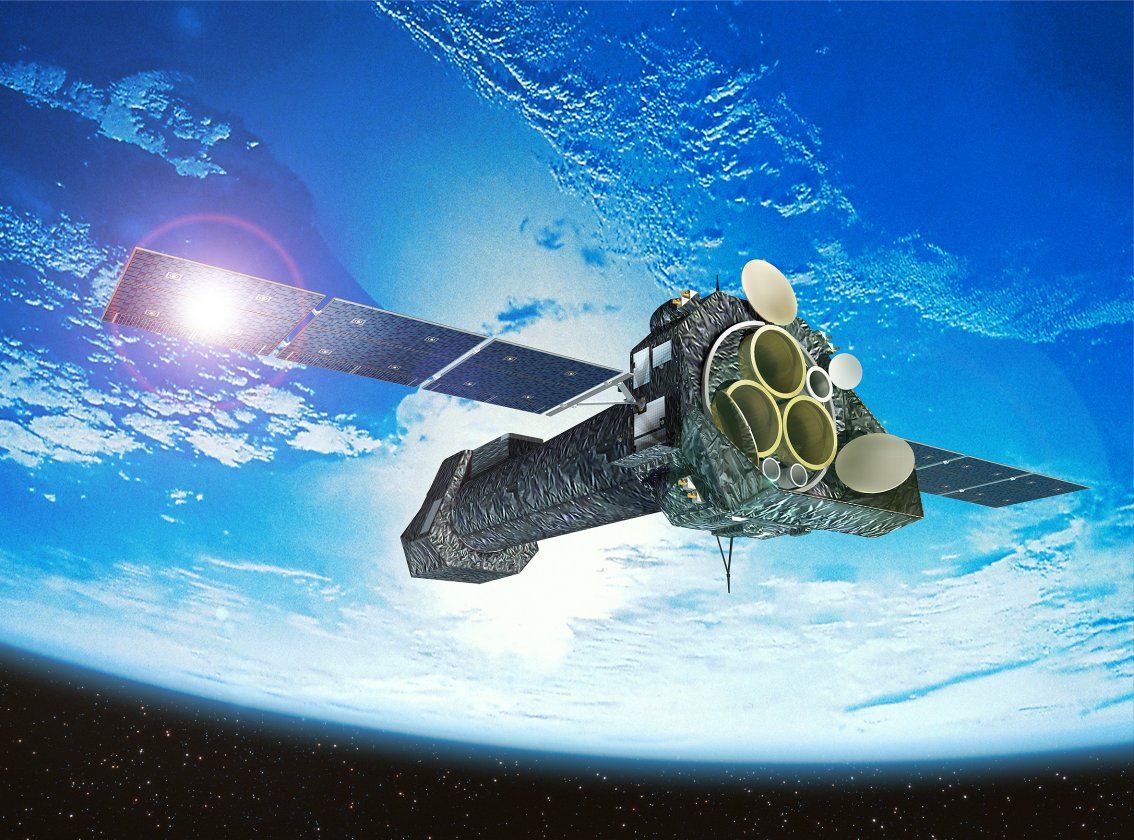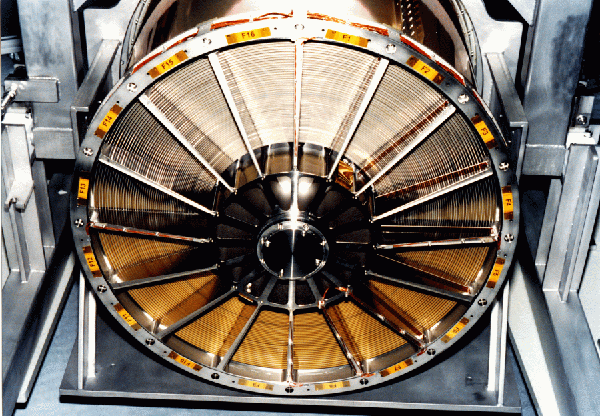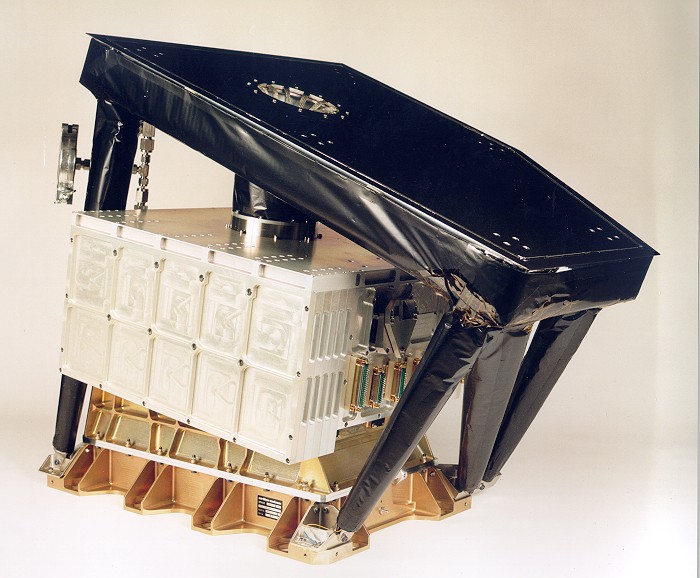



XMM-Newton (ESA, 1999) carries three X-ray telescopes and an optical monitor. These instruments offer a wide range of capabilities: X-ray imaging, spectrometry, photometry and optical monitoring.
The mission enables scientists to solve a number of cosmic mysteries, ranging from the enigmatic black holes, exploding stars, to the origin of the universe itself. XMM-Newton was successfully launched on 10 December 1999 and is still functioning fine. XMM-Newton operates as an observatory, available to all astronomers.
Science
With the help of XMM-Newton – now truly a veteran space telescope – astronomers have made crucial observations that have influenced every aspect of astronomy. For example, they have mapped clusters of galaxies, the largest structures in space, and they have investigated areas close to black holes in our galaxy and super massive black holes at the centres of other galaxies. As a result of this we now know far more about how super massive black holes evolve and how they determine the development of the largest galaxies in the universe. Thanks to XMM-Newton we also know far more about how exploding stars produce and scatter chemical elements.
Technology
Two of the X-ray telescopes carry Reflection Grating Spectrometers (RGS). These instruments consist of reflection grating arrays placed behind the telescope mirrors which disperse the light onto CCD detector cameras at the spectroscopic focus of the telescopes. SRON, acting as the Principal Investigator (PI) institute, was in charge of the development and construction of the RGS spectrometers in collaboration with other organizations in Europe and the USA. Apart from overall responsibility, SRON built the two X-ray detector cameras for the RGS.
The RGS allows astronomers to decompose X-ray light of individual sources into a spectrum of great detail. Ranging from X-ray wavelengths of 0.5 nm until 3.8 nm (compare: visible light ranges from 400 nm to 800 nm) this spectrum reveals the detailed fingerprint of very hot atomic gases, with each atomic species showing its distinct spectral lines. Analyses of these spectra can learn astronomers about the temperature, pressure, composition and velocities in these hot cosmic gases.
Main objects of interest for the RGS are sources which show distinct atomic lines. These sources range from stellar coronae to hot clusters of galaxies.
Reflection Grating Spectrometer
A reflection grating is a mirror to which step-like structures have been applied. The RGS has 600 steps per millimeter. X-rays are only reflected at an angle, where the wavelength difference of reflected radiation between two adjacent steps is exactly one entire wavelength or a multiple thereof.
Each RGS has no less than 182 gratings, each made from a 0.2 micrometer thick gold layer on a carrier of silicon carbide. Each grating measures 10 x 20 centimeters. The gratings are located between the telescope mirrors and the focal point of the mirrors. In this manner the gratings intercept part of the bundle.
Radiation unraveled by the gratings is captured by CCD detectors that are located at the focal surface of the telescope mirror. In the X-ray image the wavelengths are separated according to location on the CCDs, just like the colors of the rainbow. The instrument is cooled to minimize the background noise in the CCD detectors. This is realized by means of a radiator on the outside of the satellite, which removes heat generated by the instrument.
Links
- XMM-Newton ESA
- XMM-Newton on Twitter and Facebook


